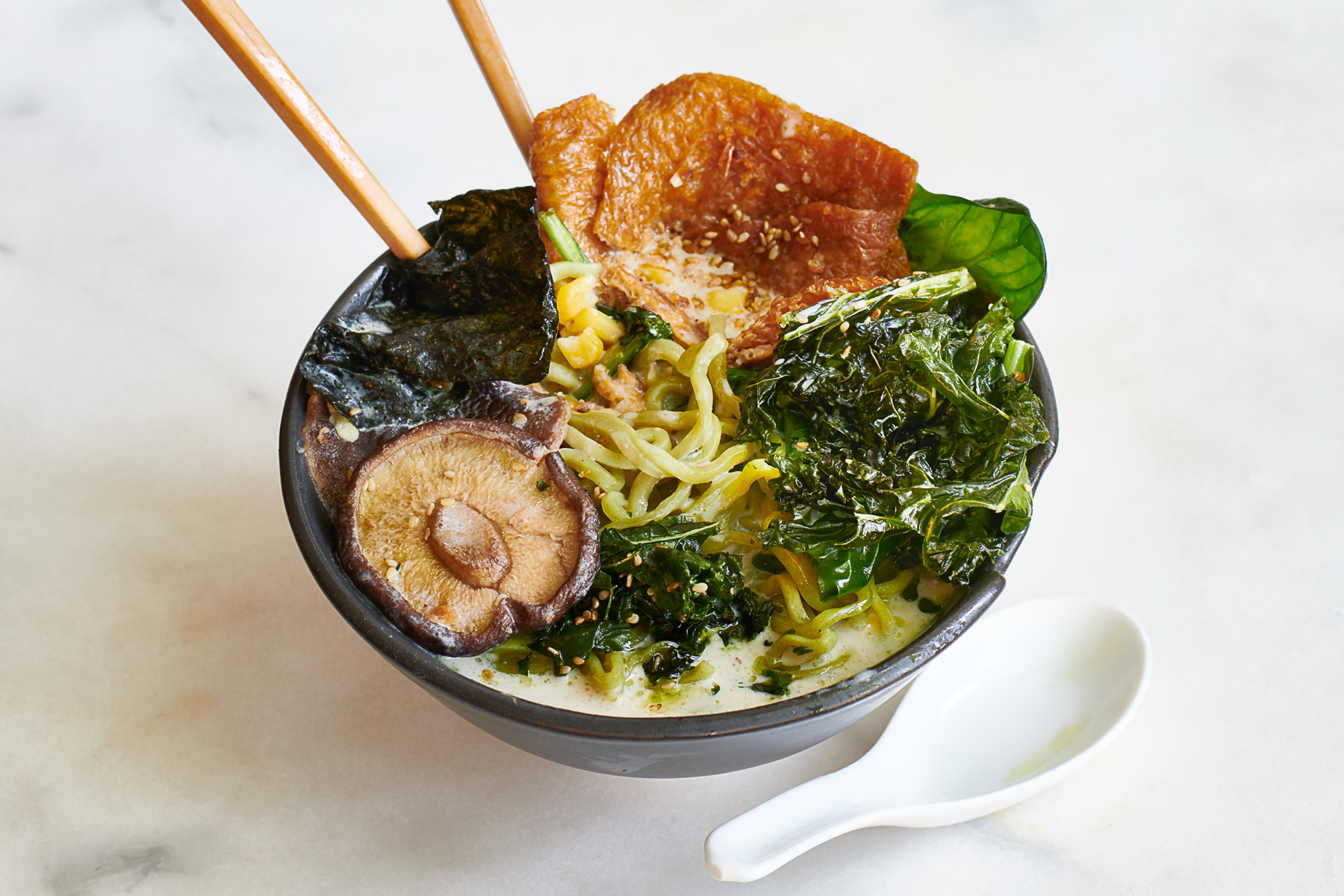Quarantine time has seen many restaurants move nimbly to food you can take away. As such, it’s been a time for trying new ramens. Spots like Ten Ramen and Salaryman, strict adherents to a stringent “no to-go” policy that’s all about safe-guarding the sanctity of their wares, have pivoted. Out of respect for their purpose, I’d never mutter. For lovers of ramen, there have been upsides, though. And so I offer a potential addition to your ramen repertoire.
In tonkotsu ramen, pork bones do their thing, adding creamy richness. But not at Hinodeya Ramen Bar. When Masao “Mark” Kurabara, a fourth-generation chef with shops near Tokyo and in San Francisco, thinks of the cuisine of Japan, he thinks of the tradition of dashi—a light base of kombu (seaweed) and bonito flakes. Its roots are in Kansai culinary tradition from the area around Kyoto and Osaka that predates Tokyo’s influence, which focuses on the darker pursuits of soy. But dashi’s golden-hued broths are what Kuribara hoped to bring to Hinodeya, which opened last summer on Lowest Greenville.
So, the signature ramen: delicately smoky from its kombu, bonito, and scallop broth. There are lightly whole wheat-flecked noodles—with a pleasant, distinctive chew—and chashu (the only pork in the place aside the pork-scallop oil that’s a complex flavor component for another bowl).
But there is more. Soymilk may seem an unusual ingredient to praise in ramen, but it’s the secret behind the creamy vegan ramen that has quickly became a favorite of mine, one of the most unusual and interesting in town. Notice the opal broth, its gossamer creaminess, the way it marries with a crinkle of charred kale, jade-green spinach noodles, kabocha squash, sweet fried lacquered tofu and a hint of sweetness and depth from sesame paste. Maybe I’m in need of ramen bowls that feel like gardens, but it’s like falling into a springtime reverie. Soymilk remains the key to the depth, body, and mouthfeel.
For Kurabara, it was an extension of the tofu used in the fine dining restaurants at which he had experience working in Japan. There, its silken softness was revered as a complex ingredient with cachet. Its pale, moonlike qualities bely its complexity. Kurabara went back to the source for soymilk’s creamy richness. When blended with nutty sesame paste its forms a smooth and rich base. For lovers of porky, fatty, rich tonkotsu, this vegan bowl may be, ironically, the closest thing.
A bowl of ramen can be its own world. But if you want to carry over the subtle flavors, an order of blistered shishito peppers can appear alongside, fluttering faintly with smoky katsuobushi flakes. Somehow, on my last visit, they’d managed to make this ubiquitous staple a standout. And there’s a sake cocktail with soymilk, too, giving it body. The other trick is knowing to reach for yamahai (traditional method brewed) and Junmai sakes: their complexities in the world of sake marry so well with dashi.






